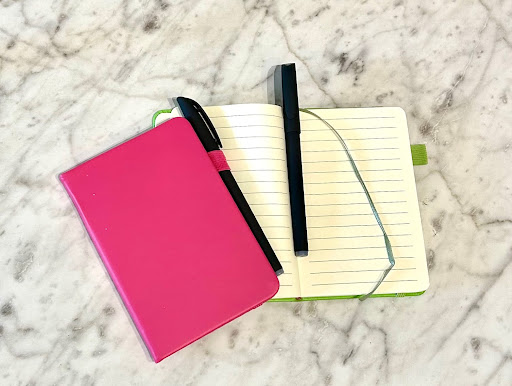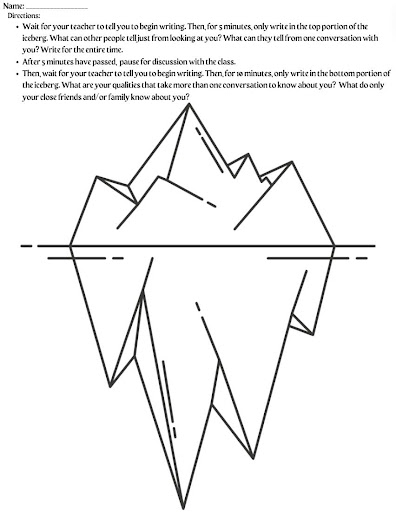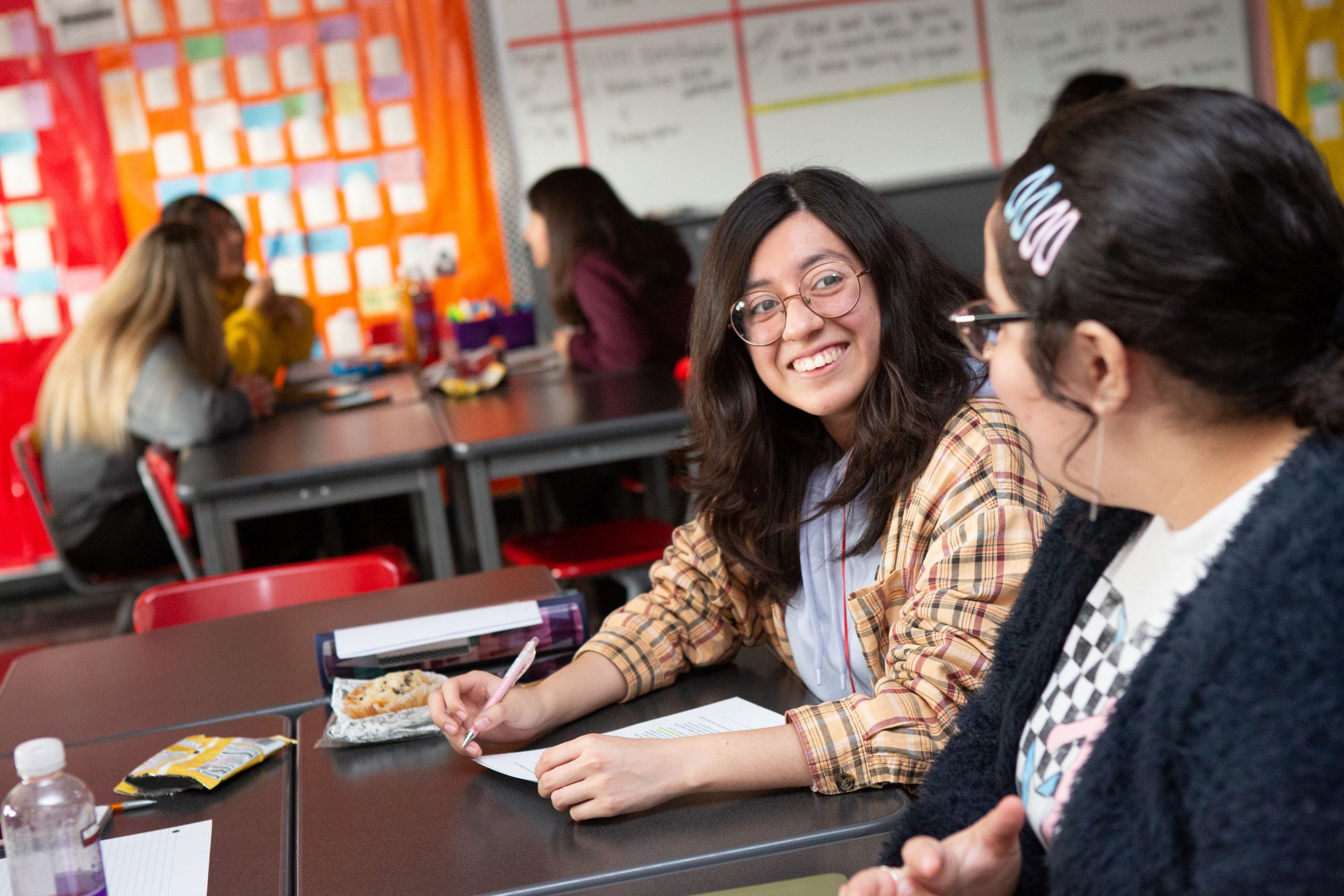Happy back-to-school to all of the teachers out there! Ready-or-not, we are setting up or have begun our new school years. This year, I am making fostering relationships between students from different social groups an essential part of my curriculum. Today, I want to share one of the projects I plan on using to make sure I am successful with my goal.
I have titled this project “My Friend’s Story” because it focuses on relationships as well as students’ interviewing, communication, note-taking, and writing skills.
“This year, I am making fostering relationships between students from different social groups an essential part of my curriculum.”

Required Materials:
- Commonplace notebooks, writing paper, or student devices (I use these notebooks that were generously gifted to me from my teacher wishlist!)
- Introduction slides
- Question of the day slides
- Short Story Prompts & Requirements
- Poetry Prompts & Requirements
Step 1: Adapt the Project for Your Class
This project can be adapted to fit a variety of needs and grade-level standards. However, you might find some aspects of it work better for your group than others. Carefully review all aspects of the project before assigning. Additionally, decide how you want to group students. This project is most effective when students are paired with peers outside of their typical friend groupings. However, there may be some instances in which past experiences with a peer might prevent the efficacy of the project, as well as cause additional stress for both you and your students throughout the duration of the project. You know your group best, so review the parameters and plan accordingly to create an optimal experience.
Step 2: Introduce the Project
Display the “My Friend’s Story” slides to your students. Pose a couple of questions to students to get them thinking about new perspectives. Perhaps try:
- Who is your closest friend? Why?
- What makes someone a good friend?
- When was the last time that you were surprised by how much you had in common with someone outside of your social group?

Step 3: The Iceberg
Display the following slide.

Time permitting, use the following handout to encourage students to think deeper about perspective.

Read the following directions out loud and allow students to complete the activity.
Directions:
- Wait for your teacher to tell you to begin writing. Then, for 5 minutes, only write in the top portion of the iceberg. What can other people tell just from looking at you? What can they tell from one conversation with you? Write for the entire time.
- After 5 minutes have passed, pause for discussion with the class.
- Then, wait for your teacher to tell you to begin writing. Then, for 10 minutes, only write in the bottom portion of the iceberg. What are your qualities that take more than one conversation to know about you? What do only your close friends and/or family know about you?
Step 4: Interview Norms
Students will be spending at least 10 class periods interviewing each other to get a better understanding of their partners. Creating positive interactions is crucial to the academic and social emotional aspects of this project. Begin by establishing norms, and continue to remind students throughout the entirety of the project of these norms. Check out my example for “norms” and add any that you think could help your group to be successful.

With this project, and others like it, I always give students the option to take items off the record even if they are said during the interview. The idea is to get a better understanding of each other and our various perspectives, and I want students to be comfortable. However, if adapting this for a journalism class, you might consider amending this rule.
Step 5: Partners & Supplies
At this point, you are ready to get the students started on the work. Announce their partnerships, You can have them be as involved as you think would work for your room. One option is to have students sit beside each other for the duration of the project. Another is to have students remain in their current seats and move to begin class with interviews, at the end to close the day, or even as a mid-class reset if you are working with a blocked schedule.
Whether you have individual notebooks or student devices, make sure that students have a dedicated space to keep track of their notes.

Step 6: The Interview Process
The interview process will prove to be challenging for most students. The ability to ask follow-up questions may prove to be the biggest challenge throughout. Consider creating a set time for talking and a set time for note-taking to help them push through some of the initial awkwardness. Don’t forget to continuously remind students of the interview norms.
Possible Interview Questions:
- Tell me about your family.
- Where did you grow up?
- What is your favorite object that you own?
- When was the last time you laughed until you cried? What happened?
- Did you go trick-or-treating as a kid? What was your favorite year? Why?
- Who is your best friend? Why?
- What’s your favorite season and why?
- Do you have any pets?
- What field do you want to work in?
- What makes you feel better when you are sick?
Step 7: The Culminating Artifact
After a sufficient amount of interviews have occurred, it is time for the partnerships to end. Now, the students will move on to the creative portion, working independently from their partners. I would consider doing both of the following, or you can allow students to make their own choice.
One option is for students to write a short story retelling one of their partner’s stories from the perspective of their partner. For this assignment, they will speak in first-person, as if they ARE the other person. They should try to pepper in as many supporting details as possible from their interviews. The requirements can be amended as necessary based on the level of your students. I would suggest at least 2 pages of writing, at least 3 instances of dialogue, and 2+ instances of figurative language of their choosing for secondary students.
Another option is for students to write a poem, retelling one of their partner’s stories from the perspective of their partner. For this assignment, they will speak in first-person, as if they ARE the other person. Additional parameters can be added depending on your current unit of study. Students could have more freedom and write in free verse with a line limit, or you could give them more structure and have them write sonnets.
Step 8: Reflection
Allow students to give each other feedback on the work that they have created. Overall, reviewers should be looking for the ways in which the interviewer applied emotions to the events that happened to the interviewee. Overall, this activity will help students to develop a stronger sense of self, build a stronger connection to their pasts, forge new relationships with their peers, and improve their creative writing skills.
Resources
Please login or register to claim PGPs.
Alternatively, you may use the PGP Request Form if you prefer to not register an account.



